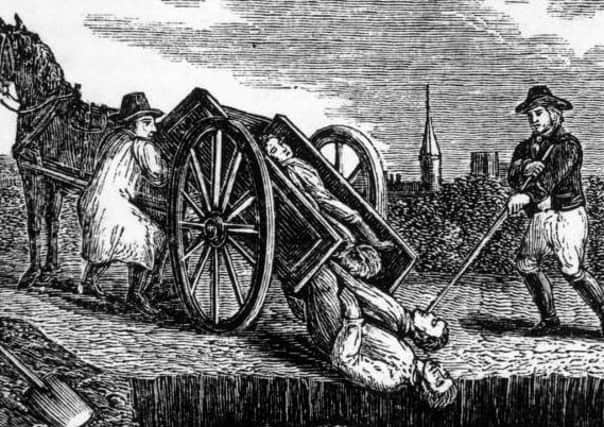The Bubonic Plague - a 17th century Coronavirus


With the world scrambling to combat Covid 19 and the prospect of its certain arrival in our community, my mind turned again to the great visitation of bubonic plague in the 17th century.
I have written about this before in this column but there are some interesting parallels with the present situation and I thought it worth a re-telling. Our town has had a few unwelcome visitors over the centuries but the least popular was surely the unknown chap (probably from Bo’ness) who arrived in the autumn of 1644 with a dose of the plague which quickly spread through the population. The authorities had been well aware of the danger and had given the order to shut the gates to try to keep the pestilence at bay. No outside workers were allowed to enter the town without an official pass but it was all to no avail.
Advertisement
Hide AdAdvertisement
Hide AdOnce the disease had arrived it was all hands to the pump to deal with those who were infected and try to stop the spread.
The plague had probably arrived in Scotland through east coast ports and although Falkirk had a fairly small population, the people were crowded together in narrow closes and wynds off the High Street, ideal conditions for disease to spread.
There was a swift response from local leaders both civil and religious.
In December James Livingston, the Earl of Callendar, wrote to his Falkirk baillie ordering immediate action to close up some houses and guard others and to ensure that those confined were supplied with meal and coals.
Advertisement
Hide AdAdvertisement
Hide AdSince contaminated clothing had to be destroyed, the earl ordered his men to “try what coarse cloath can be gottin in Falkirk at two shillings or half a croune ane ell, and buy it, and cause all the taylzeours to fall a-making of four tailed coats and breiches.” Special workers called ‘smeikers’ and ‘clengars’ used smoke from burning coals to fumigate and clean the suspect houses. The church thought the arrival of the pestilence was a punishment from God and days of prayer and fasting were ordered. Special celebrations were cancelled because “banquittas, brydellies and nicht wakes are not decent when God is offendit with the land”.
Later on, weddings were allowed but only six guests on each side were permitted to attend.
The plague stayed in Falkirk for almost three years but we have no record of how many people died though it must have been dozens.
Because of the fear that the pestilence would escape from the graves of victims when a lair was opened, the church decided that the dead should be buried outside the town. They were carried to the common land of Graham’s Muir which at that time was open land and buried together in plague pits known afterwards as the Pest Graves.
Advertisement
Hide AdAdvertisement
Hide AdA stone wall was built round the spot in 1647 to prevent cattle from eating the grass in case their milk would pass on the disease. This remained the case until the early 19th century when a man called Dunn decided to knock the walls down and let the cows in to graze.
Nothing bad happened and not many years later Dr John Meek acquired the land which was later used for housing. However the name ‘PEST GRAVES’ continued to appear on maps for many years and we can pinpoint the place fairly accurately as the junction of George Street and Russel Street.
Things are going to get pretty hairy in the near future but just be grateful that you will not be forced to wear four-tailed coats and breeches.